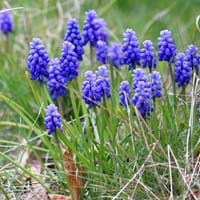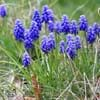Life Span
Perennial
Perennial
Type
Bulb or Corm or Tuber
Herbs
Origin
Southern Africa, South Africa
Europe, Asia
Types
Cusick's camas, large camas
Not Available
Number of Varieties
Not Available
Habitat
meadows, moist forests, Open Plains
Dry areas, Roadsides, stream banks, Stream side, Waste areas
USDA Hardiness Zone
8-10
3-7
AHS Heat Zone
Not Available
7-1
Sunset Zone
21,22
1a, 1b, 2a, 2b, 3a, 3b, 4, 5, 6, 7, 8, 9, 10, 11, 12, 13, 14, 15, 16, 17, 18, 19, 20, 21, 22, 23, 24
Habit
Rosette/Stemless
Clump-Forming
Flower Color
White, Yellow, Red, Blue, Purple, Pink, Lavender, Violet
White, Lavender
Flower Color Modifier
Bicolor
Bicolor
Fruit Color
Not Available
Sandy Brown
Leaf Color in Spring
Green
Gray Green, Gray
Leaf Color in Summer
Light Green
Gray Green, Gray
Leaf Color in Fall
Several shades of Green
Gray Green, Gray
Leaf Color in Winter
Light Green
Light Green
Leaf Shape
Long slender
Arrowhead
Plant Season
Spring, Winter
Spring, Summer, Fall
Sunlight
Full Sun, Partial Sun
Full Sun, Partial Sun
Type of Soil
Loam
Clay, Loam, Sand
The pH of Soil
Acidic, Neutral
Acidic, Neutral, Alkaline
Soil Drainage
Well drained
Well drained
Bloom Time
Early Spring, Spring, Late Winter, Indeterminate
Summer, Late Summer, Early Fall
Tolerances
Black Walnut Toxicity, Rabbit, Shade areas
Drought, Dry soil
Where to Plant?
Container, Ground, Pot
Container, Ground
How to Plant?
chipping, Offsets, scooping, Twin scaling, Vegetative
Seedlings
Plant Maintenance
Low
Low
Watering Requirements
Medium
Do Not over Water, Never Over-water, Requires regular watering, Water when soil is dry
In Summer
Lots of watering
Lots of watering
In Spring
Moderate
Moderate
In Winter
Average Water
Average Water
Soil pH
Acidic, Neutral
Acidic, Neutral, Alkaline
Soil Type
Loam
Clay, Loam, Sand
Soil Drainage Capacity
Well drained
Well drained
Sun Exposure
Full Sun, Partial Sun
Full Sun, Partial Sun
Pruning
Remove damaged leaves, Remove dead branches, Remove dead leaves
Prune if you want to improve plant shape, Prune in spring, Remove damaged leaves, Remove dead leaves
Fertilizers
All-Purpose Liquid Fertilizer, General garden fertilizer, Time release fertilizer
fertilize every 2-3 weeks while growing, fertilize in growing season
Pests and Diseases
Pests and diseases free
Caterpillars, Leaf Hoppers, Nematodes, Spider mites
Plant Tolerance
Black Walnut Toxicity, Rabbit, Shade areas
Drought, Frost
Flower Petal Number
Single, Double, Semi-Double
Single
Fragrant Bark/Stem
No
Yes
Foliage Texture
Medium
Medium
Foliage Sheen
Glossy
Matte
Attracts
Insects
Flying insects, Insects, Spider Mites
Allergy
Asthma
Avoid during Pregnancy, Headache, Stomach pain, Vomiting
Aesthetic Uses
Bouquets, Cottage Garden
Beautification, Landscape Designing, Showy Purposes
Beauty Benefits
For treating wrinkles, Remove blemishes, Skin Problems
Not Available
Edible Uses
Sometimes
Yes
Environmental Uses
Air purification, Forms dense stands, Very little waste
Air purification
Medicinal Uses
Leucoderma, Urinary problems
Arthritis, Cold, constipation, Fever, Insomia, Migraines, Upset stomach
Part of Plant Used
Bulbs, Root
Whole plant
Other Uses
Animal Feed, Decoration Purposes, Showy Purposes
Air freshner, Decoration Purposes, Employed in herbal medicine, Making Perfumes, Making Shampoo, Making Sweet Scented Oil, Medicinal oil, Used as Ornamental plant, Used for its medicinal properties
Used As Indoor Plant
Yes
Yes
Used As Outdoor Plant
Yes
Yes
Garden Design
Bedding Plant, Container, Cutflower, Mixed Border, Rock Garden / Wall
Container, Herb / Vegetable, Mixed Border
Botanical Name
Hyacinthus orientalis
NEPETA cataria
Common Name
Hyacinth, common hyacinth, garden hyacinth, dutch hyacinth
Cat Nip, Catnip
In German
Hyazinthe
Katzenminze
In French
jacinthe
cataire
In Spanish
jacinto
Catnip
In Greek
υάκινθος
Είδος δυόσμου
In Portuguese
jacinto
catnip
In Polish
hiacynt
Kocimiętka
In Latin
et hyacinthinas,
catnip
Phylum
Magnoliophyta
Magnoliophyta
Class
Liliopsida
Magnoliopsida
Family
Liliaceae
Lamiaceae
Clade
Angiosperms, Monocots
Angiosperms, Asterids, Eudicots
Tribe
Not Available
Mentheae
Subfamily
Scilloideae
Nepetoideae
Season and Care of Wild Hyacinth and Catnip
Season and care of Wild Hyacinth and Catnip is important to know. While considering everything about Wild Hyacinth and Catnip Care, growing season is an essential factor. Wild Hyacinth season is Spring and Winter and Catnip season is Spring and Winter. The type of soil for Wild Hyacinth is Loam and for Catnip is Clay, Loam, Sand while the PH of soil for Wild Hyacinth is Acidic, Neutral and for Catnip is Acidic, Neutral, Alkaline.
Wild Hyacinth and Catnip Physical Information
Wild Hyacinth and Catnip physical information is very important for comparison. Wild Hyacinth height is 10.20 cm and width 5.10 cm whereas Catnip height is 980.00 cm and width 60.00 cm. The color specification of Wild Hyacinth and Catnip are as follows:
Wild Hyacinth flower color: White, Yellow, Red, Blue, Purple, Pink, Lavender and Violet
Wild Hyacinth leaf color: Green
Catnip flower color: White and Lavender
- Catnip leaf color: Gray Green and Gray
Care of Wild Hyacinth and Catnip
Care of Wild Hyacinth and Catnip include pruning, fertilizers, watering etc. Wild Hyacinth pruning is done Remove damaged leaves, Remove dead branches and Remove dead leaves and Catnip pruning is done Prune if you want to improve plant shape, Prune in spring, Remove damaged leaves and Remove dead leaves. In summer Wild Hyacinth needs Lots of watering and in winter, it needs Average Water. Whereas, in summer Catnip needs Lots of watering and in winter, it needs Average Water.





